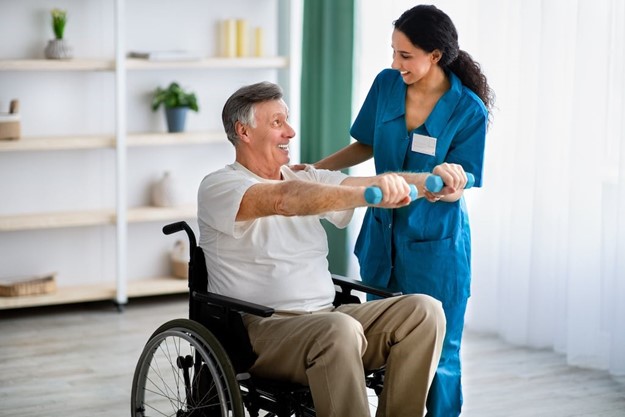A client who has colon cancer and is scheduled for a colon resection with a possible colostomy tells the nurse, "I'm worried about that bag."
Which of the following is an appropriate response by the nurse?
"Let's wait until after the surgery to discuss your concerns about your colostomy.".
"You are worried about having to wear a colostomy bag?".
"The surgeon will only place the colostomy if it is necessary.".
"Have you ever known someone who has a colostomy?".
The Correct Answer is B
The nurse should respond to the client’s concern by saying “You are worried about having to wear a colostomy bag?” This response acknowledges the client’s concern and allows the client to express their feelings and concerns about the potential colostomy.

Choice A is not an appropriate response because it dismisses the client’s current concern and delays addressing it until after the surgery.
Choice C is not an appropriate response because it does not address the client’s concern about wearing a colostomy bag.
Choice D is not an appropriate response because it shifts the focus away from the client’s concern and onto someone else.
Nursing Test Bank
Naxlex Comprehensive Predictor Exams
Related Questions
Correct Answer is B
Explanation
A nurse should consult an occupational therapist when caring for a client who had a stroke and requires assistance with morning ADLs.
Occupational therapists specialize in helping individuals regain their ability to perform activities of daily living (ADLs) and can provide valuable assistance in this situation.

Choice A is wrong because a physical therapist focuses on improving mobility and physical function.
Choice C is wrong because a speech-language pathologist focuses on improving communication and swallowing abilities.
Choice D is wrong because a registered dietician focuses on nutrition and dietary needs.
Correct Answer is C
Explanation
A.When mixing insulins, you should draw the short-acting insulin into the syringe first. This is done after injecting air into both vials (first into intermediate-acting, then into short-acting). Drawing intermediate-acting insulin first can contaminate the short-acting insulin vial with the longer-acting solution, which could alter the effectiveness of future doses.
B.Although this step is required when mixing insulins, it is not the first step. The nurse should first inject air into both vials to maintain vial pressure.
C.The nurse should inject air into the intermediate-acting insulin vial first because it helps prevent contamination and maintains the correct pressure within the vial. Intermediate-acting insulin, typically NPH (Neutral Protamine Hagedorn), is cloudy, and air injection into the vial allows for easy withdrawal later on without disrupting the order of mixing.
D.Injecting air into the short-acting insulin vial is necessary but should be done after injecting air into the intermediate-acting vial. By injecting air into both vials first, the nurse prevents a vacuum effect, which can make it difficult to draw up the insulin. After injecting air, the nurse can draw the short-acting insulin into the syringe before moving to the intermediate-acting insulin. This order minimizes the risk of contamination.
Whether you are a student looking to ace your exams or a practicing nurse seeking to enhance your expertise , our nursing education contents will empower you with the confidence and competence to make a difference in the lives of patients and become a respected leader in the healthcare field.
Visit Naxlex, invest in your future and unlock endless possibilities with our unparalleled nursing education contents today
Report Wrong Answer on the Current Question
Do you disagree with the answer? If yes, what is your expected answer? Explain.
Kindly be descriptive with the issue you are facing.
